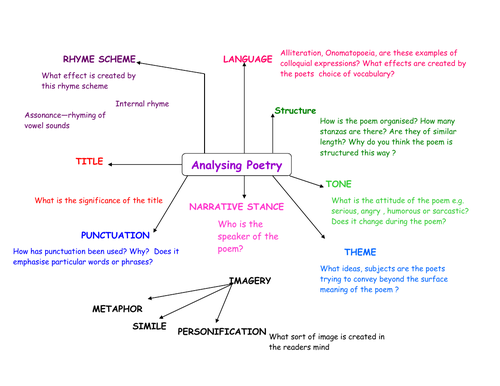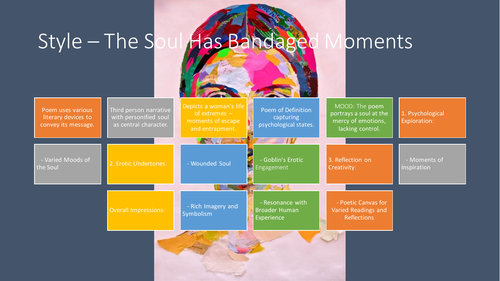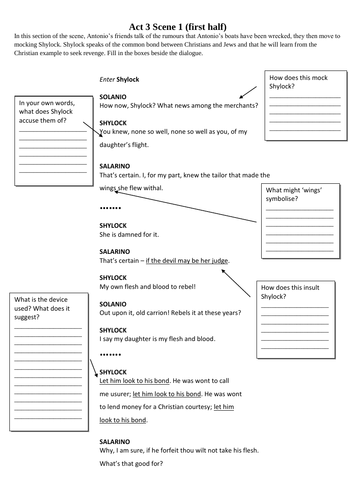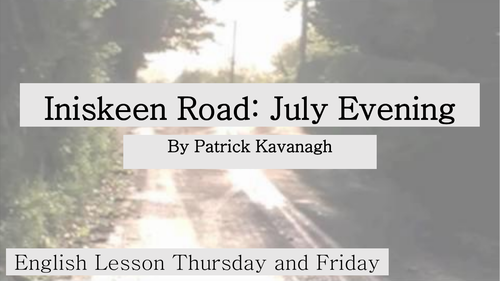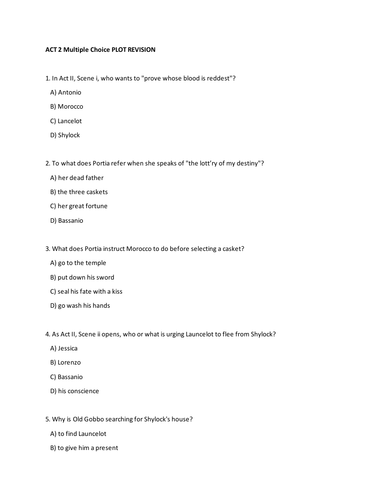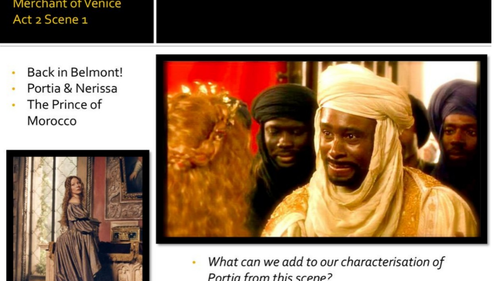
426Uploads
100k+Views
7k+Downloads
English

Act 4 +5 Visual Guide
The visual guides for Acts 4 and 5 of King Lear bring the drama of Shakespeare’s scenes to life with a moody, evocative style that captures the tragic intensity of each moment.

Macbeth Quick Emoji Visual Guide
his Macbeth emoji visual guide summarizes each act of the play through key emojis, capturing major events, emotions, and symbols. From the witches’ prophecy and Macbeth’s rise to power to Lady Macbeth’s descent into madness and Macbeth’s tragic downfall, each act includes emojis representing characters, settings, and themes, like the crown for ambition, dagger for murder, and ghost for haunting guilt. This engaging, visual shorthand provides a memorable overview of the play, making it easier for students to recall plot points and key themes in each act.

King Lear Act 3 Revision Worksheet
Plot Summary
Summarize key events in each scene of Act 3, focusing on character actions and developments that drive the plot forward. This includes Edmund’s deception, Lear’s reaction to the storm, and Gloucester’s loyalty to Lear.
Key Quotes
Identify and interpret significant quotes in Act 3, connecting them to characters’ emotions, conflicts, and themes, like Lear’s mental turmoil and his view of justice.
Themes
Explore the main themes of Act 3, including Madness, illustrated by Lear’s descent into confusion, and Loyalty and Betrayal, highlighted through Gloucester’s loyalty to Lear despite betrayal.
Character Development
Examine character growth in Act 3, especially focusing on Lear’s reflections during the storm and Gloucester’s moral choices, revealing shifts in their priorities and self-awareness.
Multiple-Choice Questions
Test comprehension with multiple-choice questions that reinforce understanding of key moments and character motivations in Act 3.

Visual Revision Guide Kin Lear Act 3
This visual revision guide for Act 3 of King Lear is a powerful depiction of the scene’s central themes and emotions, all represented through symbolic imagery. At the center stands an old man, representing King Lear, battling against a fierce storm with dark clouds and violent winds, symbolizing both the literal storm on the heath and Lear’s inner turmoil. Surrounding Lear are key visual elements that represent significant moments and themes from the act:
A broken heart symbolizes betrayal, referencing both Edmund’s betrayal of Gloucester and the betrayal Lear feels from his daughters, Goneril and Regan.
A crying face conveys Lear’s emotional anguish as he struggles with feelings of abandonment and madness.
A handshake symbolizes loyalty, highlighting Gloucester’s steadfastness in helping Lear despite the risks involved.
The absence of text allows for the focus to be purely on these emotive symbols, making it an effective, visually appealing revision aid for students to interpret Act 3’s core messages at a glance.

King Lear Act 1 Test
he King Lear Act 1 Test is a comprehensive assessment designed for 6th Year Leaving Certificate English students. The test evaluates students’ understanding of the main events, themes, characters, and literary techniques in Act 1 of King Lear.
Test Breakdown:
Part 1: Multiple Choice Questions (10 marks)
This section consists of 10 multiple-choice questions. Each question focuses on key moments, character actions, or significant quotes from Act 1. Students are required to select the correct answer from four choices.
Topics covered include:
Lear’s decision to divide his kingdom.
The roles of characters like Cordelia, Kent, and the Fool.
Key quotes and Lear’s emotional state by the end of Act 1.
Part 2: Fill-in-the-Gaps (11 marks)
This section requires students to complete missing words from important quotes in Act 1. A word bank is provided to assist students in filling in the blanks.
Example quotes include:
Lear: “How sharper than a __________’s tooth it is to have a __________ child!”
Fool: “Thou hadst little __________ in thy bald crown when thou gavest thy __________ one away.”
Part 3: Who Said It? (5 marks)
In this section, students match famous quotes from Act 1 to the correct character. Each quote is listed with four possible speakers, and students must identify who said it.
Key quotes include lines from Lear, Cordelia, Kent, and the Fool.
Part 4: Short Answer Questions (10 marks)
This section includes 10 short answer questions, requiring students to respond in 1–2 sentences. The questions focus on character actions, motivations, and significant plot points.
Example questions include:
How does Edmund manipulate his father Gloucester in Act 1?
What advice does the Fool give to Lear in Scene 4?
Part 5: Character Analysis (20 marks)
This section is the most detailed part of the test, asking students to choose one of three essay-style questions to answer. The focus is on analyzing key characters (Lear, the Fool, Goneril, and Regan) and how they are developed in Act 1. Students are expected to refer to key quotes and techniques used by Shakespeare.
Example essay questions include:
Analyze King Lear’s actions in Act 1. How do his decisions to divide the kingdom and test his daughters reflect his personality flaws?
Discuss the role of the Fool in Act 1. How does he use humor and criticism to help Lear understand his mistakes?

Elizabeth Bishop Essay Planner
The Elizabeth Bishop guide is a short guide designed to help Leaving Certificate English students understand and analyze Elizabeth Bishop’s poetry. The document provides detailed explanations, strategies for writing poetry essays, and key insights into Bishop’s themes and stylistic techniques.
Key Features of the Document:
Introduction to Elizabeth Bishop’s Poetry:
The document begins by introducing Elizabeth Bishop as a poet whose work often delves into themes of personal experience, nature, survival, and identity. It emphasizes her distinctive style, marked by detailed observation and emotional restraint.
Understanding the Leaving Certificate Poetry Essay:
Students are guided on how to approach a poetry essay, focusing on the themes and stylistic features that are commonly examined in Bishop’s work. It outlines the importance of identifying key words in the question and how to structure a response around them.
Past Exam Questions:
The document includes a section with past exam questions related to Bishop’s poetry (e.g., from 2009 and 2013). These questions focus on analyzing the themes and language used by Bishop, providing students with real-world examples of what to expect in their exams.
Sample Essay Structure:
A step-by-step breakdown of how to write a poetry essay is provided. This includes guidance on:
Crafting a strong introduction that mentions the poet and key themes.
Writing body paragraphs that analyze individual poems, with a focus on techniques like imagery, simile, and metaphor.
Ending with a thoughtful conclusion that summarizes the main points and offers a personal reflection.
Sample Essay Paragraph:
The document includes a sample paragraph based on a past exam question. It demonstrates how to analyze a specific poem (e.g., The Fish) and link it to the themes of survival and resilience using vivid imagery and personal reflection.
Key Techniques in Bishop’s Poetry:
A list of important literary techniques used by Bishop, such as:
Imagery: Her ability to paint vivid pictures through descriptive language.
Symbolism: How objects or creatures in her poems symbolize larger human experiences.
Tone: The mood or attitude conveyed in her poems.
Personification: Attributing human qualities to non-human objects, often creating empathy for the subjects of her poems.
Practice Questions and Scaffolding:
The document provides students with a practice essay question and a clear scaffold for structuring their responses. The scaffold helps students break down their analysis and use quotes effectively in their essays.

King Lear Act 1 Scene 5 Worksheet
Multiple Choice Questions
Four questions focusing on Act 1 of King Lear, specifically Lear’s actions and mental state. These questions assess students’ understanding of the early plot and the interactions between Lear, his daughters, and the Fool. Topics include Lear’s fear of madness, his confrontation with Goneril, and the role of the Fool as a truth-teller.
2. Fill-in-the-Blanks with Quotes
This section helps students recall and complete important quotes from the play. It includes four key quotes that deal with Lear’s growing awareness of his mistakes, his regret towards Cordelia, and his early expressions of madness.
3. PEE Chains (Point, Evidence, Explanation)
Two tasks encourage students to construct PEE paragraphs, which develop their ability to analyze Lear’s character development and his relationship with the Fool:
Task 1: Focuses on how Lear’s character changes from Act 1, Scene 1 to Act 1, Scene 5, particularly his growing fear of madness.
Task 2: Explores the Fool's role as Lear’s conscience and truth-teller, using sentence starters to help students analyze their interactions.
In both tasks, sentence starter suggestions for Point, Evidence, and Explanation are provided, giving students a structured approach to their analysis.
4. Matching Exercise – Quotes and Themes of Madness
This section is a matching exercise where students pair quotes from King Lear with corresponding themes related to madness. The quotes illustrate Lear’s fear of madness, regret, and identity crisis, while the themes highlight key aspects of Lear’s psychological unraveling and how it is reflected by the Fool.
The worksheet balances comprehension with deeper analysis, offering students both recall-based tasks and opportunities for analytical writing.

Narrative Writing Worksheet: Understanding Characters and Relationships Sally Rooney Normal People
Narrative Writing Worksheet: Understanding Characters and Relationships Sally Rooney Normal People

King Lear Worksheet
Unlock your students’ understanding of Shakespeare’s King Lear with this detailed and structured worksheet focused on Act 1 Scene 1. This resource is perfect for helping students engage deeply with the text, encouraging close reading and textual analysis.
Key Features:
Guided Questions with Embedded Quotes:
Students are prompted to answer key questions about the scene, with a selection of quotes provided to support their responses. This helps them practice using evidence from the text to back up their analysis, following the PEE (Point, Evidence, Explanation) structure.
Character Analysis:
Explore the motivations and emotions of key characters like Gloucester and King Lear. Students are encouraged to analyze Gloucester’s complex feelings toward his son Edmund and Lear’s reasons for dividing his kingdom.
Matching Exercise - Daughters’ Responses:
A creative and interactive task where students match each of Lear’s daughters (Goneril, Regan, and Cordelia) to the correct adjective that describes their nature, and then connect this to a corresponding quote from the text. This exercise aids in developing critical thinking and comprehension skills.

Patrick Kavanah Inniskean Road July Evening Worksheet
Patrick Kavanah Inniskean Road July Evening Worksheet and tasks
Summarized into topics:
Patrick Kavanagh and "On Raglan Road" poem/song
Diary entry from Patrick Kavanagh's perspective on the night of the poem
Drawing representing the song
Poem from the perspective of someone going to Billy Brennan's dance
Two drawings of Billy Brennan's dance - one in 1936 and one in a modern setting
Additional research on Patrick Kavanagh and his life.

Merchant of Venice Act 2 Multiple Choice Worksheet and Shylock PEE chain
Merchant of Venice Act 2 Multiple Choice Worksheet and Shylock PEE chain

Writing Skills Checklist
Evaluate the following criteria in writing
IDEAS
ORGANIZATION
Paragraph organization
SENTENCE FLUENCY
VOICE
WORD CHOICE
CONVENTIONS

